Tatsumi Uezato
Learning Mutual Modulation for Self-Supervised Cross-Modal Super-Resolution
Jul 19, 2022



Abstract:Self-supervised cross-modal super-resolution (SR) can overcome the difficulty of acquiring paired training data, but is challenging because only low-resolution (LR) source and high-resolution (HR) guide images from different modalities are available. Existing methods utilize pseudo or weak supervision in LR space and thus deliver results that are blurry or not faithful to the source modality. To address this issue, we present a mutual modulation SR (MMSR) model, which tackles the task by a mutual modulation strategy, including a source-to-guide modulation and a guide-to-source modulation. In these modulations, we develop cross-domain adaptive filters to fully exploit cross-modal spatial dependency and help induce the source to emulate the resolution of the guide and induce the guide to mimic the modality characteristics of the source. Moreover, we adopt a cycle consistency constraint to train MMSR in a fully self-supervised manner. Experiments on various tasks demonstrate the state-of-the-art performance of our MMSR.
Illumination invariant hyperspectral image unmixing based on a digital surface model
Jul 23, 2020
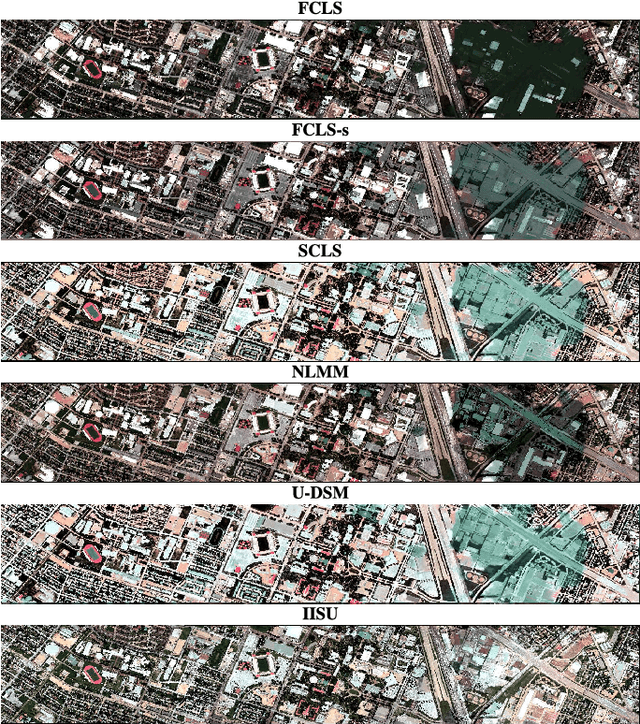
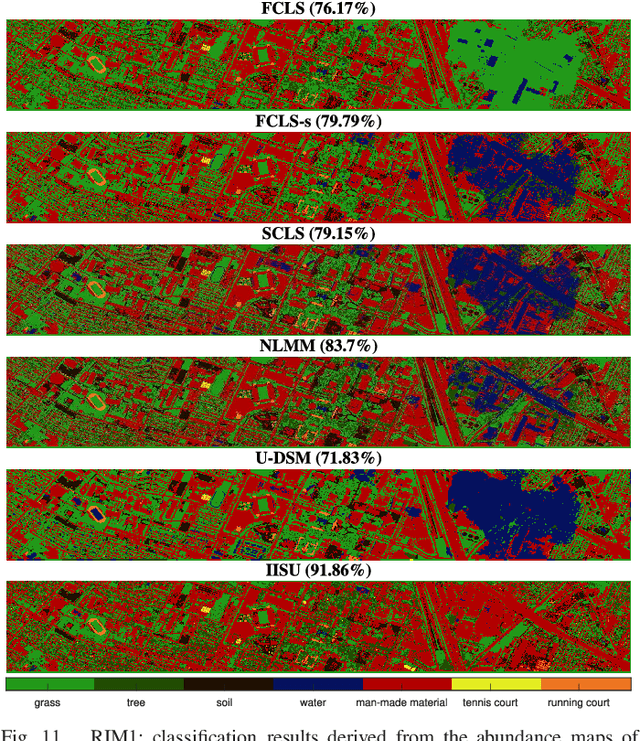
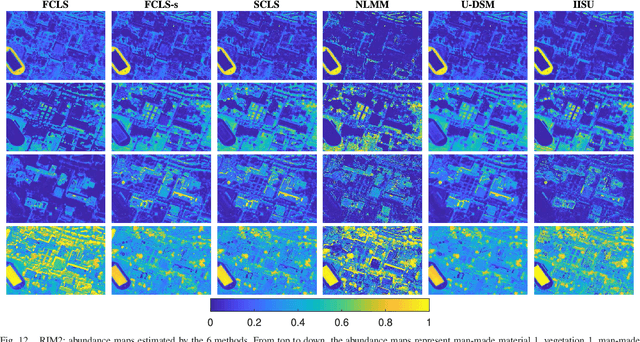
Abstract:Although many spectral unmixing models have been developed to address spectral variability caused by variable incident illuminations, the mechanism of the spectral variability is still unclear. This paper proposes an unmixing model, named illumination invariant spectral unmixing (IISU). IISU makes the first attempt to use the radiance hyperspectral data and a LiDAR-derived digital surface model (DSM) in order to physically explain variable illuminations and shadows in the unmixing framework. Incident angles, sky factors, visibility from the sun derived from the LiDAR-derived DSM support the explicit explanation of endmember variability in the unmixing process from radiance perspective. The proposed model was efficiently solved by a straightforward optimization procedure. The unmixing results showed that the other state-of-the-art unmixing models did not work well especially in the shaded pixels. On the other hand, the proposed model estimated more accurate abundances and shadow compensated reflectance than the existing models.
Guided Deep Decoder: Unsupervised Image Pair Fusion
Jul 23, 2020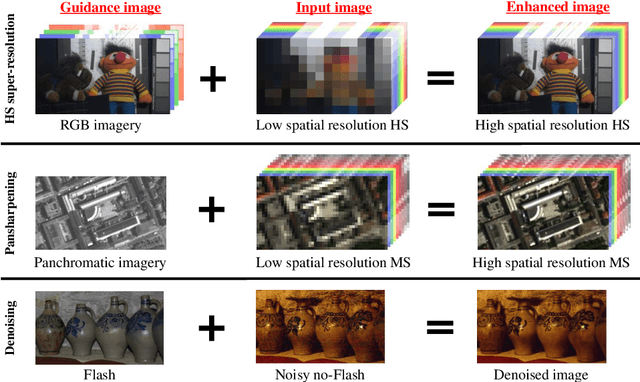

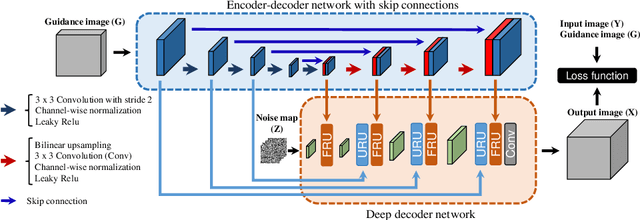

Abstract:The fusion of input and guidance images that have a tradeoff in their information (e.g., hyperspectral and RGB image fusion or pansharpening) can be interpreted as one general problem. However, previous studies applied a task-specific handcrafted prior and did not address the problems with a unified approach. To address this limitation, in this study, we propose a guided deep decoder network as a general prior. The proposed network is composed of an encoder-decoder network that exploits multi-scale features of a guidance image and a deep decoder network that generates an output image. The two networks are connected by feature refinement units to embed the multi-scale features of the guidance image into the deep decoder network. The proposed network allows the network parameters to be optimized in an unsupervised way without training data. Our results show that the proposed network can achieve state-of-the-art performance in various image fusion problems.
Hyperspectral unmixing with spectral variability using adaptive bundles and double sparsity
Apr 30, 2018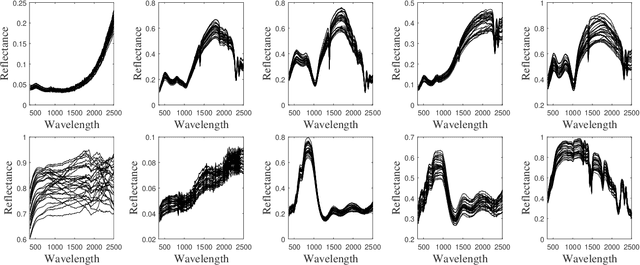
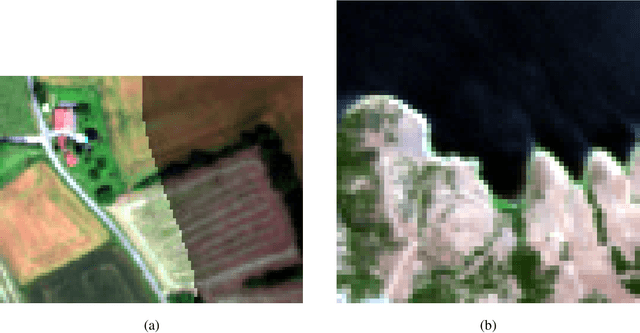
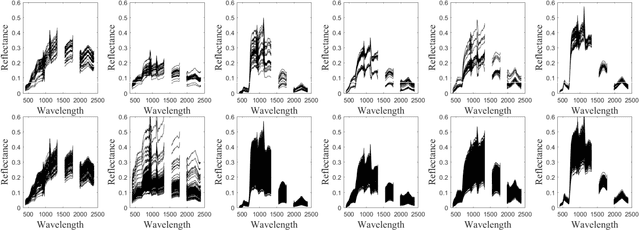
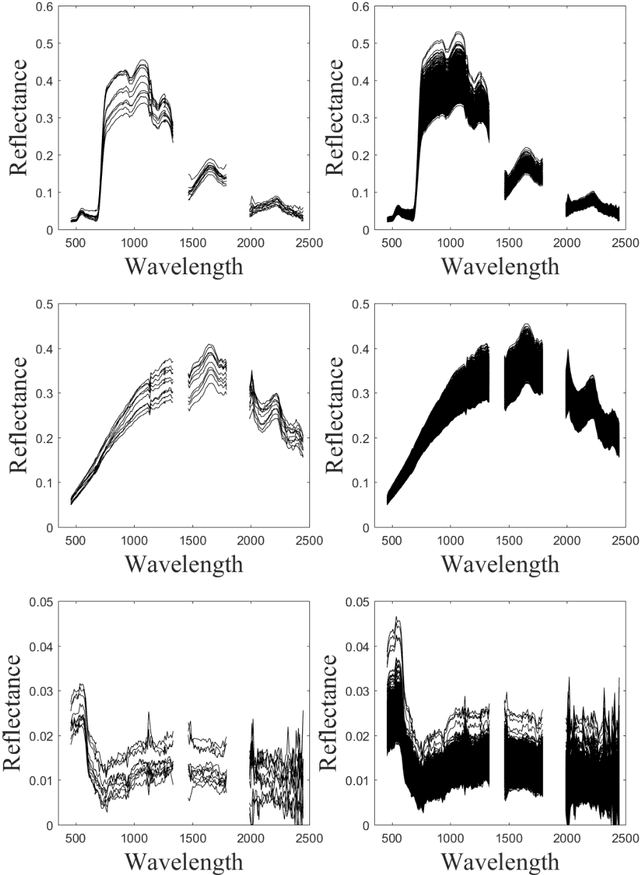
Abstract:Spectral variability is one of the major issue when conducting hyperspectral unmixing. Within a given image composed of some elementary materials (herein referred to as endmember classes), the spectral signature characterizing these classes may spatially vary due to intrinsic component fluctuations or external factors (illumination). These redundant multiple endmember spectra within each class adversely affect the performance of unmixing methods. This paper proposes a mixing model that explicitly incorporates a hierarchical structure of redundant multiple spectra representing each class. The proposed method is designed to promote sparsity on the selection of both spectra and classes within each pixel. The resulting unmixing algorithm is able to adaptively recover several bundles of endmember spectra associated with each class and robustly estimate abundances. In addition, its flexibility allows a variable number of classes to be present within each pixel of the hyperspectral image to be unmixed. The proposed method is compared with other state-of-the-art unmixing methods that incorporate sparsity using both simulated and real hyperspectral data. The results show that the proposed method can successfully determine the variable number of classes present within each class and estimate the corresponding class abundances.
 Add to Chrome
Add to Chrome Add to Firefox
Add to Firefox Add to Edge
Add to Edge